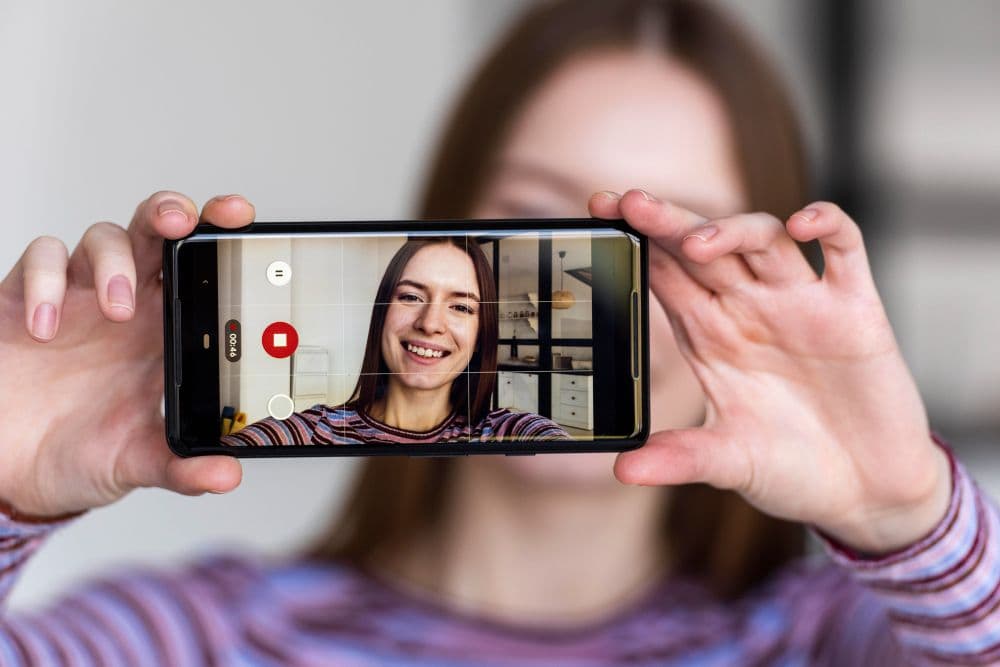

The TikTok algorithm is the engine behind every For You Page. In this guide, we break down how it works in 2025, why it’s so effective at predicting what you’ll like, and practical tips to boost your visibility and grow your views.
If you’ve ever posted a TikTok and wondered, “Why did this video blow up while my last one flopped?” — the answer lies in the TikTok algorithm.
This invisible engine decides which videos get a humble 200 views and which explode to 2 million overnight. But it’s not magic — it’s a smart mix of math, behavior, and timing.
In this guide, you’ll get the TikTok algorithm explained in plain English — how it actually works in 2025, what changed this year, and how you can work with it (not against it) to boost your visibility and go viral.

Let’s clear this up first: algorithm meaning TikTok isn’t some mystical code only engineers understand. It’s TikTok’s recommendation system — the brain that powers your FYP.
Unlike Instagram or YouTube, TikTok doesn’t just reward big accounts. The TikTok FYP algorithm gives every video a chance to be seen. That’s why a brand-new creator can go viral overnight.
Think of it this way: TikTok doesn’t care who you are; it cares how engaging your content is. That’s what makes people say, “Why is the TikTok algorithm so good?” Because it learns quickly and personalizes faster than any other platform.
TikTok hasn’t published its secret sauce (probably stored in a vault somewhere in Beijing), but based on years of creator data, we know what fuels it.
It’s a combination of engagement signals, video data, and user behavior patterns that determine if your video gets buried… or boosted.
Here’s the 2025 breakdown:
The algorithm’s first question is: “Do people actually like this video?” Engagement gives the answer.
Engagement isn’t just important — it’s the #1 ranking factor. If people interact, TikTok keeps pushing your content to bigger audiences.
TikTok also scans what’s inside your video to figure out where it belongs.
This is why creators often ask: “How do people find TikTok posts?” Answer: through a combo of FYP recommendations, searches, hashtags, and sounds.

Your activity on TikTok shapes what you see on your FYP — and vice versa.
In short, TikTok builds a taste profile for every user, then delivers videos it predicts they’ll binge-watch.
These don’t carry as much weight as engagement, but they still matter:
That’s why a video might blow up in one region but barely move the needle in another.
Some creators swear TikTok uses a hidden scoreboard (rewatch = 5 points, share = 3, like = 1).
While TikTok hasn’t confirmed this, it’s safe to assume not all actions are equal. A rewatch or share is worth far more than a casual like because it signals stronger interest.
So instead of chasing “points,” focus on sparking meaningful engagement that makes viewers stop, watch again, and share.
Okay, now that we’ve got the TikTok algorithm explained, let’s talk strategy. These are the proven ways to give your content the best shot at reaching more For You Pages.

TikTok has quietly become a search engine, especially for Gen Z.
The clearer your keywords, the easier it is for TikTok to match your video with the right audience.
If viewers swipe away immediately, the algorithm buries your video. That’s why your opening matters most.
Example: “Here’s why your TikTok videos aren’t getting views (and how to fix it).”
The FYP favours videos that feel “at home” on TikTok.
When you use TikTok’s own features, you’re playing in the ecosystem it’s built to promote.
Consistency signals that you’re an active creator worth promoting.
Think of it like training the algorithm — the more consistent your posting, the easier it is for TikTok to understand who your content is for.
TikTok thrives on niches. Whether it’s #BookTok, #FoodTok, or #TechTok, these subcultures drive discovery.
When TikTok knows your niche, it knows exactly which FYPs to test your content on.
TikTok success is a balancing act:
Copy-paste content gets lost. Adding your own spin is what makes trends work for you.
Timing isn’t everything, but it matters.
Early engagement snowballs, so posting at the right time helps your video get that initial push.
TikTok isn’t a broadcast channel, it’s a community.
The more active you are in the ecosystem, the more signals you send that you’re part of the community.
Not everything belongs on the FYP. TikTok suppresses:
Bottom line: If it violates TikTok’s Community Guidelines, it won’t get pushed.
So, how does the TikTok algorithm work? In short: it studies engagement, video info, and user behaviour to predict what each person will enjoy.
Why is the TikTok algorithm so good? Because it doesn’t just recommend — it learns. Fast. That’s why your FYP feels scarily accurate.
And for creators: the algorithm isn’t your enemy. It’s your best tool. Focus on quality, consistency, and authenticity, and the views will follow.
Remember: TikTok doesn’t just hand out fame. It rewards creators who know their audience and play the game smart.
The TikTok algorithm studies engagement signals (likes, comments, watch time), video details (captions, hashtags, sounds), and user behavior to decide what appears on the For You Page (FYP). It personalizes content for each user rather than simply promoting the biggest accounts.
Because it learns quickly. TikTok analyzes how you interact with content in real time, which makes your FYP feel hyper-personalized. This accuracy keeps users hooked and gives new creators a fair chance to go viral.
Posts can be discovered through the FYP, search results, trending hashtags, sounds, or community-specific subcultures like #BookTok or #FoodTok. Optimizing captions, keywords, and sounds increases the chances of being found.
Yes. While content quality and engagement matter most, posting when your audience is active gives your video an early boost. Quick engagement signals (likes, shares, watch time) in the first hours can help push it further on the FYP.
TikTok suppresses content that breaks its Community Guidelines, including hate speech, misinformation, adult content, dangerous challenges, spam, or heavily watermarked low-quality videos. Such content is unlikely to reach wide audiences.



